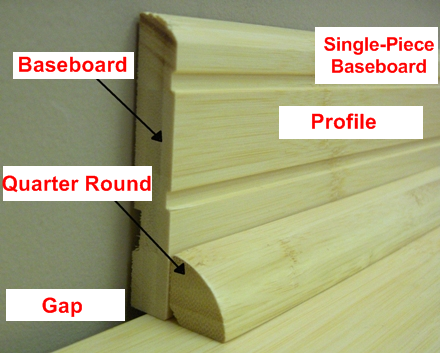Baseboard Design
Any homeowner worth his/her weight in sawdust already knows that baseboards are a great way to spiff up any room. And baseboards fit right in with my credo of: fast, easy, and (can be) cheap.
But how are baseboards designed? What’s their basic makeup? And what’s all this about single-piece baseboards vs. built-up baseboards?
Refer to the picture below and to this key here:
Single Piece Baseboard – It’s a single piece, as opposed to a built up baseboard. You can tell by looking at the top edge of the baseboard. Some baseboards are constructed of multiple pieces, and the top part is always a separate piece. This is a single-piece baseboard; a cohesive unit.
Baseboard Profile – The profile is probably the most obvious baseboard design factor. Here you find two horizontal grooves which will catch the light and create attractive shadows.
Quarter-Round – The quarter round is less baseboard design and more baseboard practicality. The quarter-round is a separate piece and it covers up the gap between the floor and the bottom of the baseboard.
Gap – Finally, it’s worth noting that another element of baseboard design is that it covers up the gap between the flooring and the wall. This gap is necessary.
